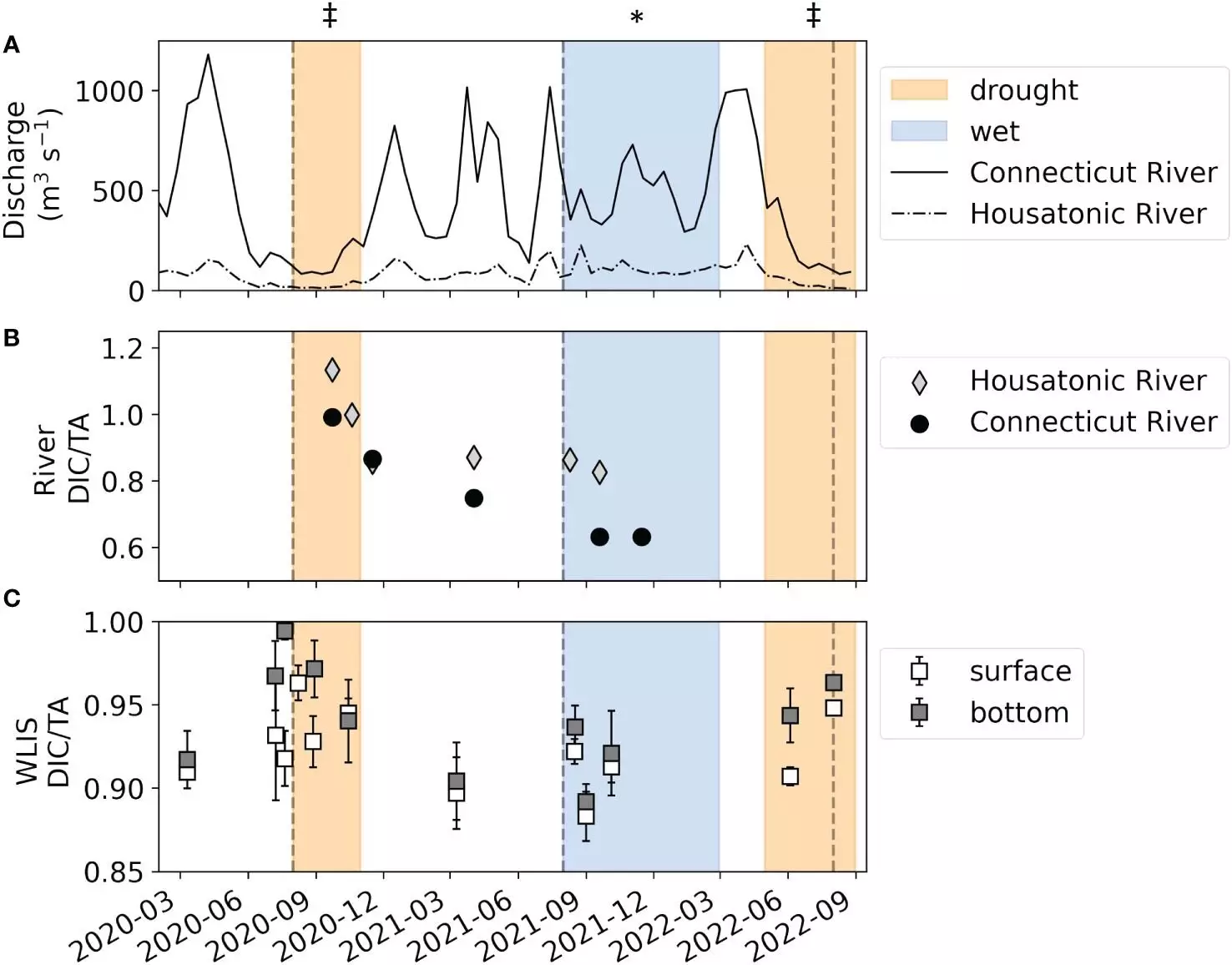Long Island Sound (LIS) serves as a vital estuarine environment within the North Atlantic Ocean, situated just a stone’s throw from one of the most densely populated urban areas in the world: New York City. This close proximity to urbanization brings with it a flurry of anthropogenic activity that comes at the expense of the natural marine environment. From recreational boating to large-scale cargo transport, LIS experiences a heavy influx of traffic that not only disrupts natural habitats but also inflicts lasting damage on the region’s ecological balance. As noise and chemical pollution swell, LIS faces a myriad of challenges that threaten to compromise its biodiversity and overall health.
The Threat of Eutrophication
Eutrophication, a process characterized by the over-enrichment of water bodies with nutrients—particularly nitrogen and phosphorus—poses significant risks to marine life. This phenomenon leads to algal blooms, which, in turn, create a lethal feedback loop disrupting the oxygen balance in the water. As these blooms die off, their decomposition consumes dissolved oxygen, leading to hypoxic conditions—or “dead zones”—which are inhospitable for fish and other aquatic organisms.
The sources of this excess nutrient loading are varied and include atmospheric deposition, wastewater discharge, and agricultural runoff. This cocktail of contaminants not only diminishes water quality but also spawns a cycle that can drastically alter the marine landscape over time. The urgent question arises: how can we combat this complex issue that plagues LIS?
The Role of Research in Understanding Acidification
Recent research has illuminated the interplay between eutrophication and acidification, revealing how ongoing pollution exacerbates conditions in LIS’s carbonate system. The work of doctoral researcher Lauren Barrett at the University of Connecticut underscores the significance of recognizing not just pH levels but also dissolved organic carbon (DOC) and total alkalinity when assessing the overall health of marine environments. As Barrett’s team explored the geographic and seasonal variations in these measurements, a pattern emerged indicating fluctuating levels of both DOC and total alkalinity, which directly correlate with river discharge patterns.
This seasonal variation is particularly important given that tropical storms can dramatically change freshwater input into the Sound. The research team discovered that during years of heavy rainfall, like 2021, total alkalinity was notably elevated, positively affecting acidification levels. In contrast, drought conditions in 2020 and 2022 contributed to worsening acidification levels, a trend that diverges from expected patterns observed in other estuaries. Such insights encapsulate the complexity of nutrient dynamics within the LIS and hint at further challenges on the horizon.
The Impact of Climate Change
As we face an era of climate change characterized by shifting weather patterns, the implications for LIS are alarming. Increased droughts, resulting from climate-induced alterations in precipitation, threaten to exacerbate the eutrophication and acidification crisis. However, the reality is more nuanced; while drought often means less freshwater inflow, the converse is true in LIS, where nutrient concentrations can spike under low-flow conditions, leading to heightened acidification.
The dilemma illustrates the pressing need for innovative solutions and comprehensive approaches to water management. As environmental conditions shift alongside climate patterns, adaptability should be woven into our strategies for ecosystem restoration.
Finding Solutions: The Path Forward
Mitigating the impacts of eutrophication and acidification demands an interdisciplinary and collaborative effort that involves scientists, policymakers, and local communities. Initial approaches, such as the establishment of nitrogen total maximum daily loads, resulted in a substantial decrease in nitrogen input into LIS. Yet, the need for aggressive and sustained efforts remains pressing. Emerging strategies may include enhanced wastewater treatment technologies, stricter zoning regulations for coastal development, and educational campaigns aimed at reducing agricultural runoff.
As stakeholders look toward the future, fostering stewardship of LIS becomes paramount. Engaging local populations in conservation efforts, promoting sustainable practices, and advocating for environmental accountability can transform LIS from a corridor of degradation into a thriving marine sanctuary.
Eutrophication and acidification represent not just pressing environmental challenges but also an opportunity for innovation and resilience. By embracing a multifaceted approach that prioritizes ecological balance, Long Island Sound can begin to heal, restoring its vital functions as a sanctuary for diverse marine species and a resource for future generations.


Leave a Reply